A Fine 18th Century Mahogany Eight Day Table Clock with Trip Quarter Repeat
Sold
Request Information
Follow Us
A Fine 18th Century Mahogany Eight Day Table Clock with Trip Quarter Repeat
An eighteenth-century English spring-driven mahogany table clock, signed on both the dial and the backplate S. Cleghorn LONDON, made circa 1770-75. The case is of classical shape for the period, with a bell top, arched doors to the front and rear, and pierced wooden sound frets to the corners. There are arched viewing windows to the sides. The case is embellished with pineapple finials on the corners and is surmounted by a shaped carrying handle, while the clock rests on moulded wooden feet.
The corners of the arched brass dial are embellished by rococo spandrels around a silvered brass Roman and Arabic chapter ring, with a matted centre, date aperture above the VI and a recessed silvered signature plaque below the XII. In the arch is a strike/silent lever.
The eight-day plated movement is driven by two spring barrels via gut fusees. It consists of a going train with verge escapement, rack hour striking on a bell sounding the hours of a bell. The last hour struck can be repeated at will by pulling a cord to the bottom of the clock. The backplate has a fine border engraving and the engraved signature.
The maker, Samuel Cleghorn, was active in the last quarter of the eighteenth and the early years of the nineteenth centuries. During part of his life as a clockmaker he was associated with William Pleace.
Condition
Good. Wear consistent with age and use. It should be noted that the clock is in the most wonderful condition throughout and keeps remarkably good time!
Dimensions
Height: 20.48 in. (52 cm)
Width: 10.24 in. (26 cm)
Depth: 6.7 in. (17 cm)
Literature
Brian Loomes, Watch and Clockmakers of the World, London, 2006, p. 158
PREVIOUSLY SOLD

A Rare And Unusual 19th-Century Carriage Clock Signed Devienne Lamy A St Quentin, Circa: 1860
A Rare And Unusual 19th-Century Carriage Clock Signed Devienne Lamy A St Quentin, circa 1860. The gorge case has bevelled glass panels on all sides.

A Unique And Fine Mid 19th-Century Travelling Clock By Celebrated Makers Arnold & Dent, London
Unique and Fine Mid 19th-Century Travelling Clock By Celebrated Makers Arnold & Dent, London. The time is indicated by a fine pair of blued-steel Breguet hands.
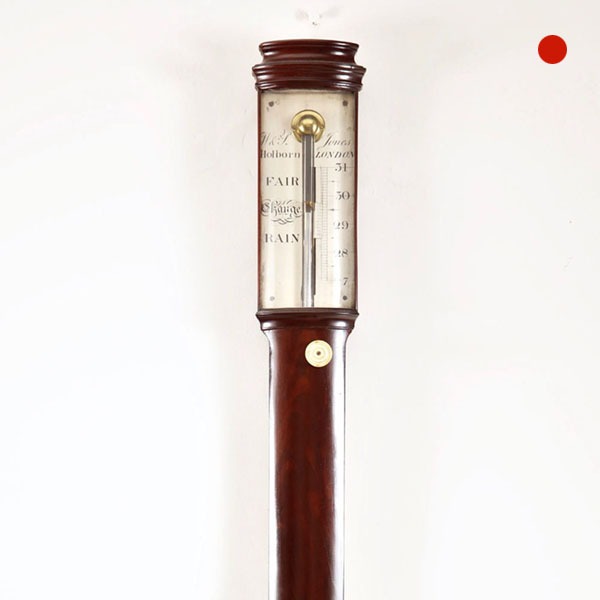
A fine 18th-Century George III mahogany bow-front stick barometer
The mahogany-veneered case has an austere form with only the moulded caddy top and the urn-shaped cistern cover to break its soberness. The silvered register plates are protected by a bowed glass, the recorder with vernier scale being operated by a knob below the register plate.
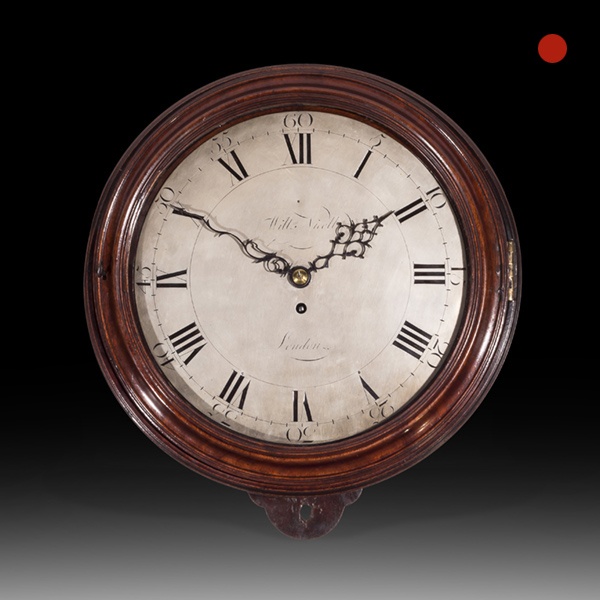
Large Mahogany 18th-Century Dial Clock, William Nicoll, London
The solid mahogany case has a moulded mahogany glazed door, which can be locked on the left-hand side. The original rectangular saltbox is permanently attached to the front and has doors to the side and the bottom.

19th-Century Quarter-striking Carriage Clock by Leroy, Paris
The gilt-brass, so-called corniche case has bevelled glass panels on all sides so that the movement is entirely visible. It is surmounted by a shaped carrying handle. The white enamel dial has a Roman chapter ring, with Arabic five-minute and minute divisions.
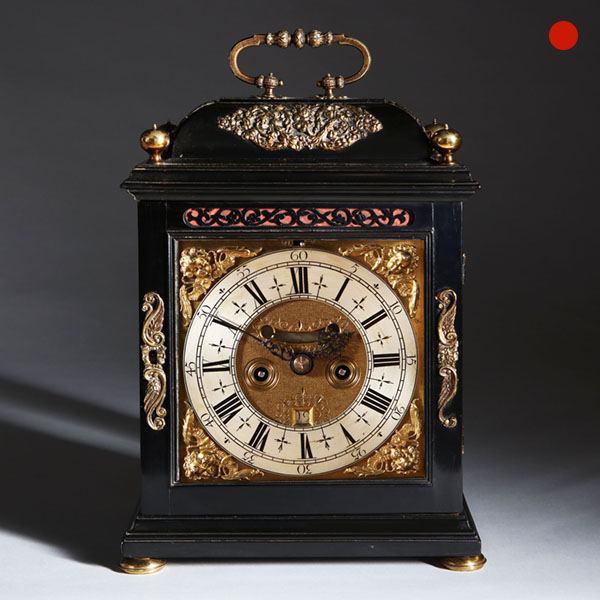
William and Mary Ebony Veneered Bracket Clock by Johnathan Lowndes
The ebony-veneered case has a so-called domed top, a design which became popular in the Charles II period (from 1675 onwards). The case is adorned with repousse brass ornaments and rests on gilt-brass bun feet. It is surmounted by a brass carrying handle of typical shape.

A Rare And Unusual 19th-Century Carriage Clock Signed Devienne Lamy A St Quentin, Circa: 1860
A Rare And Unusual 19th-Century Carriage Clock Signed Devienne Lamy A St Quentin, circa 1860. The gorge case has bevelled glass panels on all sides.

A Unique And Fine Mid 19th-Century Travelling Clock By Celebrated Makers Arnold & Dent, London
Unique and Fine Mid 19th-Century Travelling Clock By Celebrated Makers Arnold & Dent, London. The time is indicated by a fine pair of blued-steel Breguet hands.

A fine 18th-Century George III mahogany bow-front stick barometer
The mahogany-veneered case has an austere form with only the moulded caddy top and the urn-shaped cistern cover to break its soberness. The silvered register plates are protected by a bowed glass, the recorder with vernier scale being operated by a knob below the register plate.

Large Mahogany 18th-Century Dial Clock, William Nicoll, London
The solid mahogany case has a moulded mahogany glazed door, which can be locked on the left-hand side. The original rectangular saltbox is permanently attached to the front and has doors to the side and the bottom.

19th-Century Quarter-striking Carriage Clock by Leroy, Paris
The gilt-brass, so-called corniche case has bevelled glass panels on all sides so that the movement is entirely visible. It is surmounted by a shaped carrying handle. The white enamel dial has a Roman chapter ring, with Arabic five-minute and minute divisions.

William and Mary Ebony Veneered Bracket Clock by Johnathan Lowndes
The ebony-veneered case has a so-called domed top, a design which became popular in the Charles II period (from 1675 onwards). The case is adorned with repousse brass ornaments and rests on gilt-brass bun feet. It is surmounted by a brass carrying handle of typical shape.
YOU MAY ALSO LIKE

A Fine 17th Century William and Mary Kingwood Strongbox or Coffre Fort, Circa 1690
A Fine 17th Century William and Mary Kingwood Strongbox or Coffre Fort, Circa 1690 £10,900Follow...

A Fine George III Chippendale Mahogany Dumb Waiter, Circa 1760 England
A Fine George III Chippendale Mahogany Dumb Waiter, Circa 1760 England. £5,600Follow UsA Fine...
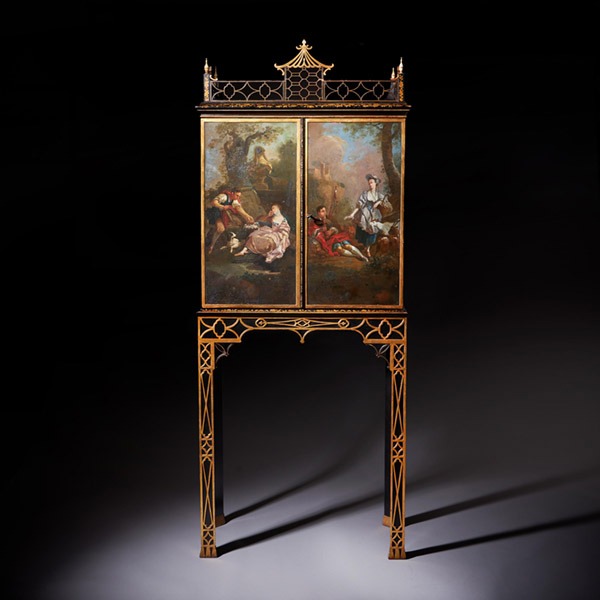
A Rare Chinese Chippendale George III cabinet on stand, circa 1760 England
A Rare Chinese Chippendale George III cabinet on stand, circa 1760. England £38,000Follow UsA Rare...
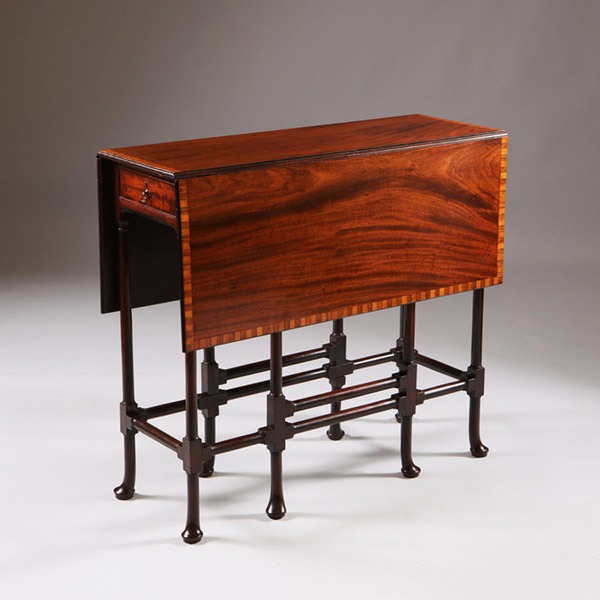
George III mahogany spider-leg table attributed to Thomas Chippendale 1768
A George III mahogany spider-leg table attributed to Thomas Chippendale 1768 £12,000Follow UsA...
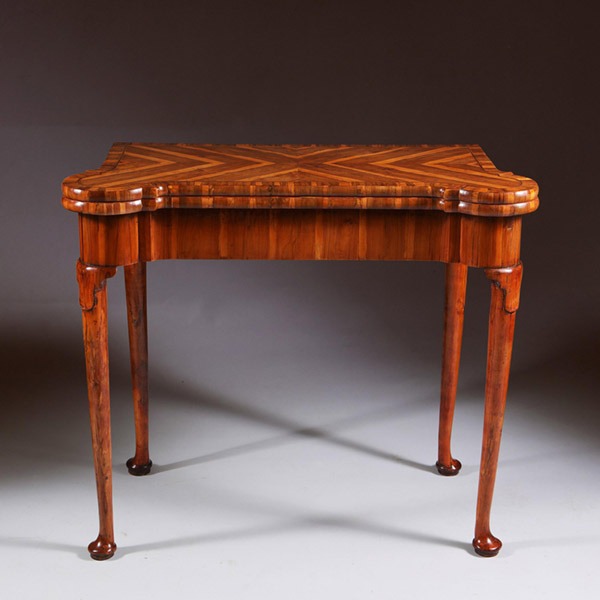
Museum Grade George I Cocus Wood Card Table, Circa 1725, England
Museum Grade George I Cocus Wood Card Table, Circa 1725. England £32,000Follow UsMuseum Grade...

Fine Two-Day Marine Chronometer Signed Charles Frodsham
Fine Two-Day Marine Chronometer Signed Charles Frodsham £6,500Follow UsFine Two-Day Marine...

A Fine 17th Century William and Mary Kingwood Strongbox or Coffre Fort, Circa 1690
A Fine 17th Century William and Mary Kingwood Strongbox or Coffre Fort, Circa 1690 £10,900Follow...

A Fine George III Chippendale Mahogany Dumb Waiter, Circa 1760 England
A Fine George III Chippendale Mahogany Dumb Waiter, Circa 1760 England. £5,600Follow UsA Fine...

A Rare Chinese Chippendale George III cabinet on stand, circa 1760 England
A Rare Chinese Chippendale George III cabinet on stand, circa 1760. England £38,000Follow UsA Rare...

George III mahogany spider-leg table attributed to Thomas Chippendale 1768
A George III mahogany spider-leg table attributed to Thomas Chippendale 1768 £12,000Follow UsA...

Museum Grade George I Cocus Wood Card Table, Circa 1725, England
Museum Grade George I Cocus Wood Card Table, Circa 1725. England £32,000Follow UsMuseum Grade...

Fine Two-Day Marine Chronometer Signed Charles Frodsham
Fine Two-Day Marine Chronometer Signed Charles Frodsham £6,500Follow UsFine Two-Day Marine...









